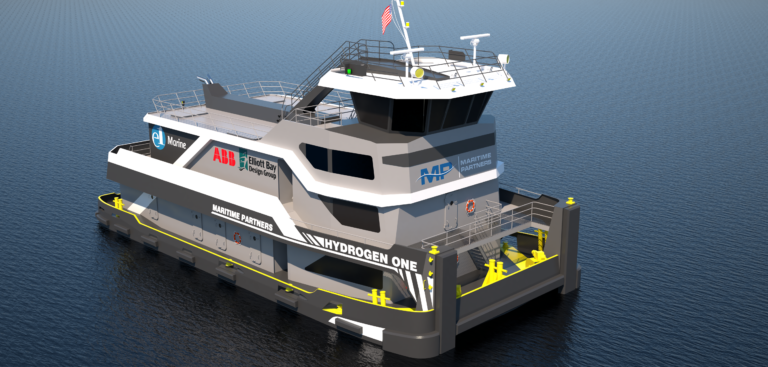Claimed to be the world’s first methanol-fueled towboat, the M/V Hydrogen One is set to join Maritime Partners’ Louisiana, USA-based fleet in 2023. It will be used to meet the growing demand for sustainable towboat operations.
Developed by Maritime Partners, Elliott Bay Design Group, e1 Marine and ABB, the new vessel will have a range of 550 miles and will be IMO 2030 compliant while also meeting the USCG’s Subchapter M requirements. The M/V Hydrogen One will benefit from ABB’s electrical power distribution and automation and e1 Marine’s methanol-to-hydrogen fuel cell.
The M/V Hydrogen One will be installed with e1 Marine’s reformer technology, enabling the vessel to generate its own hydrogen from methanol when required. The system is considered to be much safer than transferring and storing hydrogen on board, and minimal crew training will be needed to use the new technology.
“Converting methanol to hydrogen reduces the CO2 output and our reformer technology eliminates the complexities of direct fueling and storage of gas marine fuels,” said Robert Schluter, managing director of e1 Marine. “By producing hydrogen at the point of consumption from a mixture of methanol and water, e1 Marine’s system enables the safe, efficient and economic use of hydrogen as a marine fuel. The technology is ideal for anything that requires continuous power over extended periods, including workboats and medium-range passenger vessels, or to provide backup power in ports and harbors.”
With methanol being available in most of the world’s top 100 ports and a common towboat cargo, the vessel will be able to refuel easily without the need for expensive diversions when carrying out operations.
“M/V Hydrogen One is the model for what is likely to be the only practical and commercially available technology that will enable smaller vessels to run for multiple days on a single fuel load and without the need for dedicated refueling facilities,” explained Mike Complita, principal and vice president of strategic expansion at Elliott Bay Design Group. “Our naval architects have optimized the balance between reformers, fuel cells and batteries to maximize range and power while minimizing operational costs. This design and the technologies it uses can be easily scaled to suit any vessel with a similar need to operate on variable routes with multiple-day transit times.”



